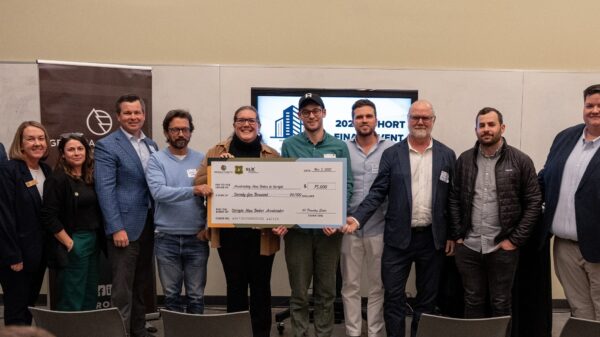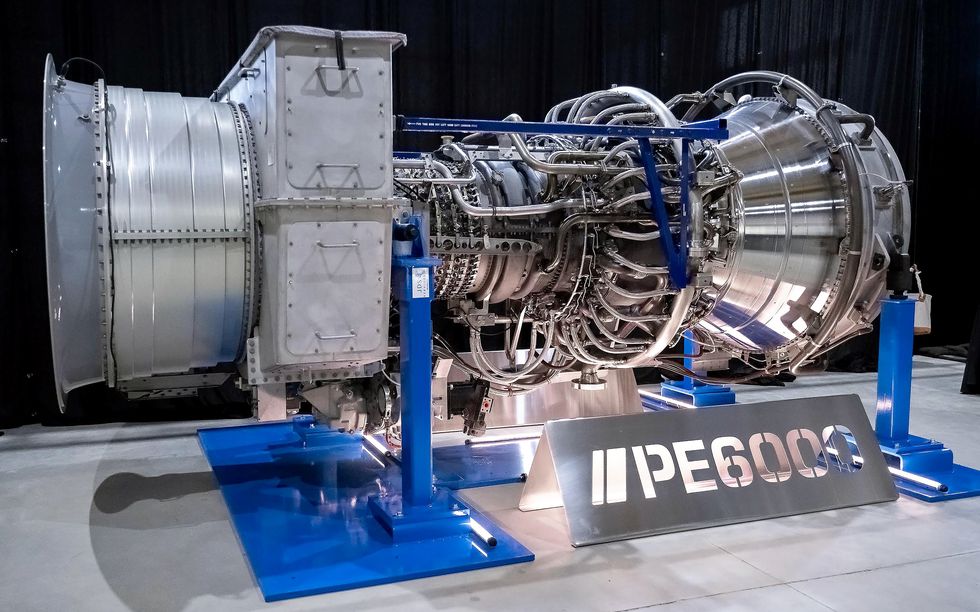Data centers are facing significant power shortages as the demand for larger facilities continues to grow, particularly with the rise of generative artificial intelligence. Developers typically rely on the electrical grid or construct onsite power plants, but they are currently experiencing delays in securing gas turbines and obtaining energy from the grid. At the Data Center World Power show held in San Antonio in October 2025, ProEnergy introduced an innovative solution: repurposed aviation engines.
According to Landon Tessmer, Vice President of Commercial Operations at ProEnergy, some data centers are adopting the company’s PE6000 gas turbines to supply power during the construction phase and for the initial years of operation. When access to grid power becomes available, these turbines can either serve as backup, support the grid, or be sold to local utilities. “We have sold 21 gas turbines for two data-center projects amounting to more than 1 gigawatt (GW),” Tessmer stated. “Both projects are expected to provide bridging power for five to seven years until they can connect to the grid and no longer require permanent off-grid generation.”
Revolutionizing Power Generation with Aeroderivative Turbines
The concept of using aeroderivative gas turbines, which are adapted from successful aircraft engines, is not new. Manufacturers like GE Vernova and Siemens Energy have long embraced this practice. These turbines are lighter, smaller, and easier to maintain than traditional heavy-frame models, making them an attractive option for data center operators.
Mark Axford, President of Axford Turbine Consultants, explained the complexity involved in modifying aviation engines for power generation. For example, the LM6000 gas turbine from GE Vernova is derived from the CF6-80C2 turbofan engine, a widely used engine in commercial aviation since its release in 1985. Modifications include expanding the turbine section to convert thrust into shaft power, adapting the structure for stationary use, and developing new controls and fuel systems. These changes enable the machine to run on natural gas instead of aviation fuel and to reduce nitrogen oxide emissions, a significant pollutant.
“Currently, there simply aren’t enough gas turbines available, and this issue is likely to worsen,” cautioned Paul Browning, CEO of Generative Power Solutions and former head of GE Power & Water. Prospective customers might face waiting periods of three to five years for popular turbine models from GE or Siemens. In contrast, a PE6000 from ProEnergy can be delivered as early as 2027.
Transforming Retired Aircraft Engines for Data Centers
ProEnergy is revitalizing retired CF6-80C2 engine cores by overhauling them and pairing them with newly manufactured components. This process allows these refurbished engines to provide 48 megawatts (MW), sufficient to power a small-to-medium-sized data center or a town with approximately 20,000 to 40,000 households. Tessmer noted that around 1,000 of these aircraft engines are expected to retire in the next decade, ensuring a steady supply for future projects.
While many large data centers require over 100 MW, some of the latest AI-focused facilities are designed for capacities exceeding 1 GW. Each overhaul restores the engine and its components to like-new condition, with thorough inspections and necessary repairs. ProEnergy primarily focuses on the CF6-80C2 engine to streamline maintenance and engineering processes.
Originally intended for utilities needing additional capacity during peak hours, the PE6000 has found new demand from data center operators seeking reliable power for entire facilities. These turbines can start up within five minutes and can be replaced with a spare within 72 hours if maintenance is required. Emissions levels average 2.5 parts per million for nitrogen oxide, well below the Environmental Protection Agency’s regulated limits, making them an environmentally friendly option.
ProEnergy has fabricated 75 PE6000 packages since 2020, with an additional 52 currently being assembled or on order. The increasing popularity of these turbines can be attributed to several factors, including the surge in data center construction and prolonged delays in grid connections. Tessmer reported instances where permitting processes for transmission lines have taken as long as eight to ten years.
As the demand for data centers grows and grid connections remain uncertain, the use of aeroderivative gas turbines may become an essential strategy for powering future AI infrastructure. ProEnergy’s innovative approach could help alleviate power shortages and support the rapid expansion of data centers worldwide.





































































